Complex of exercises for training of abdominal muscles
The abdominal muscles play a key role in the normal movement of the human body, but, unfortunately, not every of us they are fully developed. In order to competently start working on a particular muscle group, it is very important to know its structure and the next step is to start picking up the appropriate exercises for the formation of a full workout.
Anatomy of oblique muscles of men and girls
In men and women, the anatomical structure of muscle tissue is no different. But due to the individual characteristics and level of sports form, the appearance of the press in people will be varied.
The oblique muscles are located on both sides of the body, they are responsible for its turns and are muscle-stabilizers, since they stabilize the spine. It is thanks to the oblique muscles of the belly, the spine can fully fulfill its functions, as well as all our bodies remain in the right position.
It is very important to strengthen the abdominal muscles and for the sake of saving a beautiful posture. Any movement of our torso takes its beginning in these muscles, and then the signal is already received to the rest of the necessary muscle groups. If not paying due attention to the development of abdominal muscles, over time, one can observe such a negative consequence as asymmetry in the field of the waist. In order to avoid this, let's understand, from which the abdominal muscles consist and for what they answer.
The oblique muscles are composed of outer oblique and inner oblique muscles.
Inner oblique muscle
This wide flat muscle, located under the outer flat muscle, takes its origin from the outer parts of the groove bunch and the iliac bone. Consists of several fiber bundles. The upper beams are attached to cartilages located next to the bottom ribs. They are located below up. The lower beams have the top, and lower directions.
With a unilateral reduction, the inner oblique muscle together with the outer muscle of the opposite side turns the body into the same side and lowers the rib. If the reduction in the inner oblique muscle is bilateral, then it pulls the chest down and bends the spine (with a fixed position of the chest raises the pelvis - also due to the reduction of the inner oblique muscle).
Outdoor abdominal muscle
The outer muscle is located above the inner and ensures twisting and flexion of the case. With the reduction of the right outer muscle, the body is twisting to the right, with the reduction of the left - left. As for the internal muscles in this process, the opposite side turns into operation - the turn to the left helps to ensure the right inner oblique muscle and vice versa.
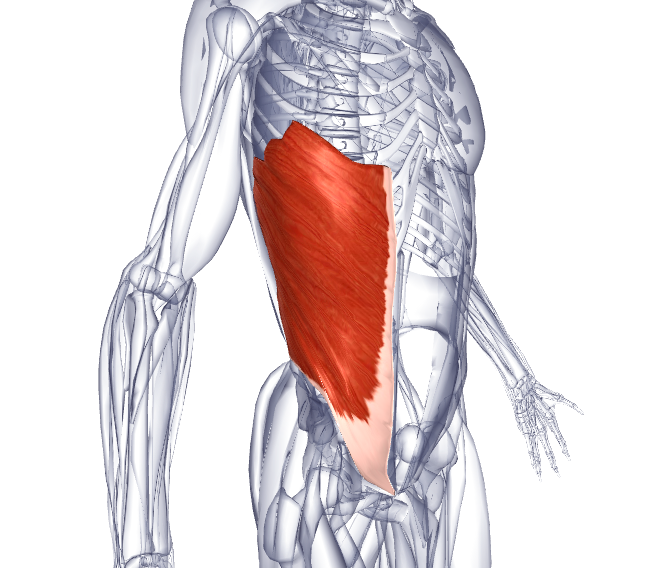
Also, the outer oblique muscle helps to tilt the body forward, and it is thanks to this muscle that we can raise and carry heavy items.
The outer and inner oblique muscle muscles are the only muscles that are in suspense, when a person stands - they support the body in a vertical position and help to maintain balance.
The outer muscle has eight large teeth, the first five - the upper - are located in the front gear muscle, and the remaining three adjacent to those tooths that belong to the widest spinal muscle.
The best exercises on the oblique muscles
For the maximum development of the muscles of the press, you should not forget about the exercises to study the abdominal muscles, since it is they form a cherished thin waist, directly affect the overall human health and perform the function of the corset.
Since the abdominal muscles are quite deeply and in everyday life are loaded as minimal, consider a set of exercises, focusing our attention precisely on the elaboration of the abdominal muscles.
Pumping abdominal muscles can be standing, lying and sitting, which allows combining various exercises and pump as much as possible as many muscles.
Slopes to the side standing without additional weight
The best exercise for girls, because the lack of burdens will not allow the muscles to throw, and hence it will save from the unwanted thickening of the waist.
- Source position - legs are placed slightly wider shoulders, head and back straight, hands we bring the head.
- On the breath we make a slope to the right, stop tilting the torso when it is felt the voltage in the left side. With the slope in the right side, there is a reduction in the muscles on the right and elongation - on the left.
- On exhaling
- Again, tilt to the left until I feel the tension in the opposite side.
- Returning to its original position.
- We repeat the required number of times before the approach is completed.
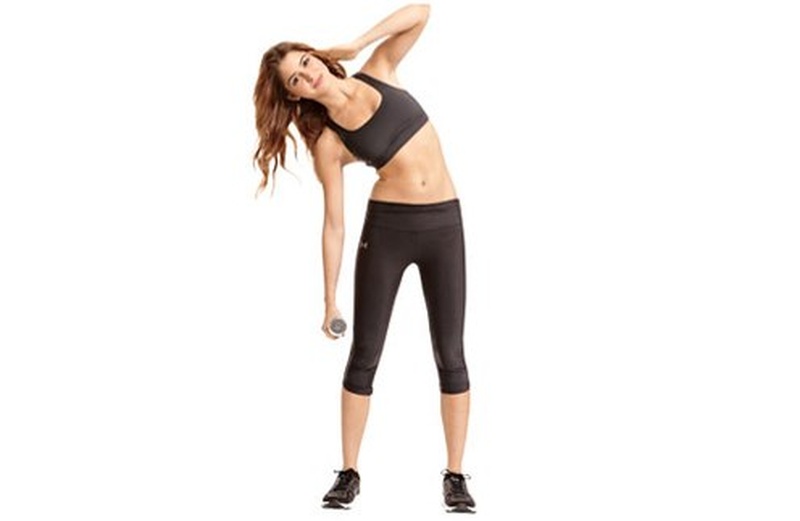
It is advisable to perform 3 approaches to 8-12 times in each direction.
Video: slopes to the opposite leg without additional weight
When performing this exercise, it is important to focus on tensile the abdominal muscles and bend as low as possible, as it will provide a stronger stretching and subsequent contraction of the muscles. It is also very important to keep the press in statics throughout the exercise - this will help the spine take a stable position.
- We take a dumbbell or any other extra weight of at least 1.5 kg into the right hand.
- Legs on the width of the shoulders, the head is straight, free hand for head or on the belt. Hold extra weight with a neutral grip with a hand lowered along the thigh.
- We remove the deflection in the lower back due to a slightly advanced pelvis. This will be the initial position.
- In exhale, slowly make the tilt right until you feel the tension on the left side.
- Returning to its original position.
- We produce the required number of repetitions in one direction, after which we change the position of the hands.
- We do the appropriate number of repetitions to the left side.
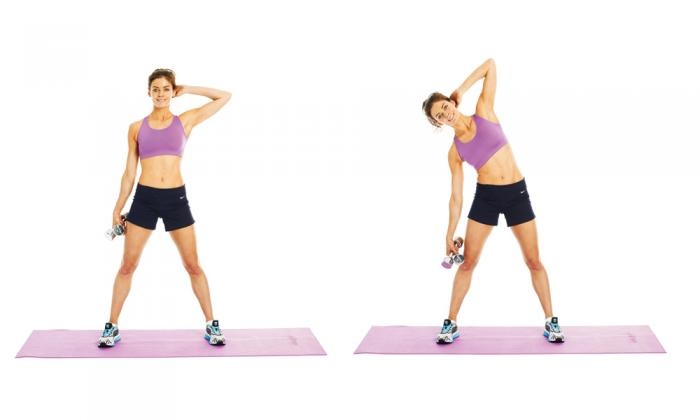
When performing slopes along the case with dumbbell, it is very important to focus on tensile abdominal oblique muscles
It is advisable to make 3 approaches of 8 repetitions in each direction.
You do not need to take dumbbells in both hands at the same time, since the second weight loss will facilitate the return process in its original position and the exercise will lose part of the efficiency.
Video: Sliding slopes along the case with dumbbell
Video: How to swing the abdominal muscles sliding slopes along the hull with dumbbell
Tilting to the opposite leg
The notorious exercise "Mill" is also considered useful for the development of abdominal muscles.
- Source position is a straight back, legs in a wide stand, straight hands are arranged on the sides.
- We make a tilt and try to reach your left leg right hand.
- Returning to its original position.
- We do the same with your left hand, but we already stretch to the right foot.
- Reconnect again.
- We repeat the required number of slopes to each leg.
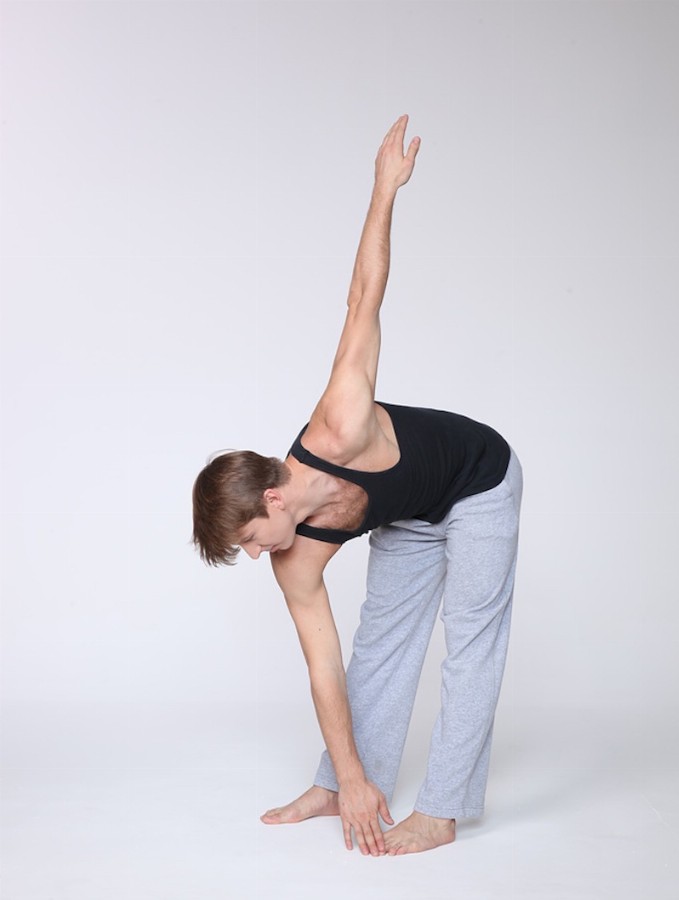
It is advisable to make 8-12 repeats in each direction in each of the 3 approaches.
During the execution of slopes, it is impossible to help yourself by the hips, it is very important to work with the lower back and muscles of the press. Otherwise, the exercise will lose its effectiveness.
Video: Expands to the opposite leg
For the next exercise, we will need any support. It can be a wall, the back of the chair or something else.
- Source position - I get up right sidel to the support, keep behind it with your right hand, put on the belt, put the legs together.
- We perform lateral masses with your left foot, raising it as much as possible up.
- We accept the starting position.
- We produce the required number of repetitions to the left side, after which we are deployed to the left side of our support and we do all the same in the right side.
On each max make an exhalation, when returning to its original position - inhale.
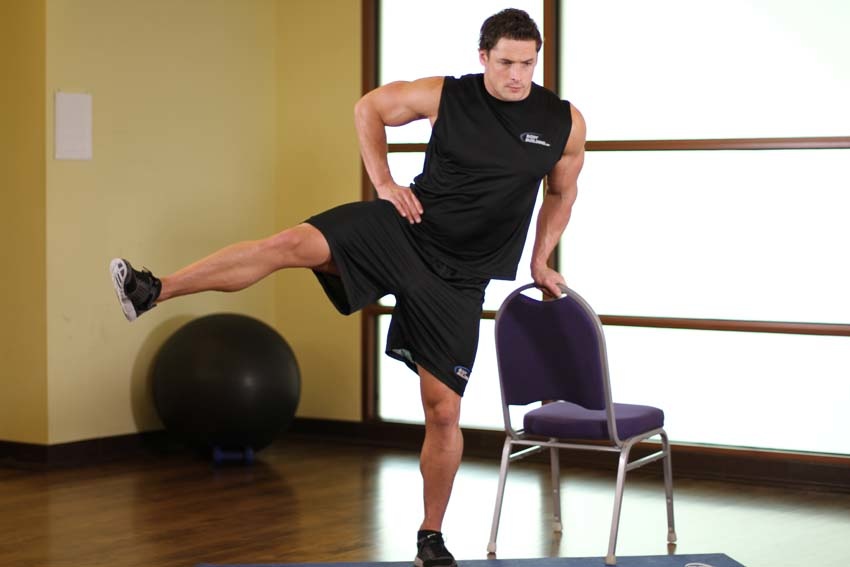
During such masks, the legs in addition to the abdominal muscles are also included in the work of the hips and the jagged muscles.
Video: Execution of side moving feet
Side bar is a complicated version of the classic plank. Consider the option of the side plank on the forearm.
- I put the right side on the floor or rug, straighten.
- Under the shoulder we substitute the elbow, put the palm on the surface. Shoulder and elbow must be perpendicular to the floor. The left hand can be on the belt, behind head or stretched up. The glance is guided right in front of yourself.
- Pull the legs, the feet on each other or the top stands before the bottom.
- We rise to the elbow, we save the balance in both points - in the elbow and side of the foot.
- We do not allow the pelvis falling down, we try to make the body all the time constituted one straight line.
- Upon the expiration of driving time, we lower the body to the floor.
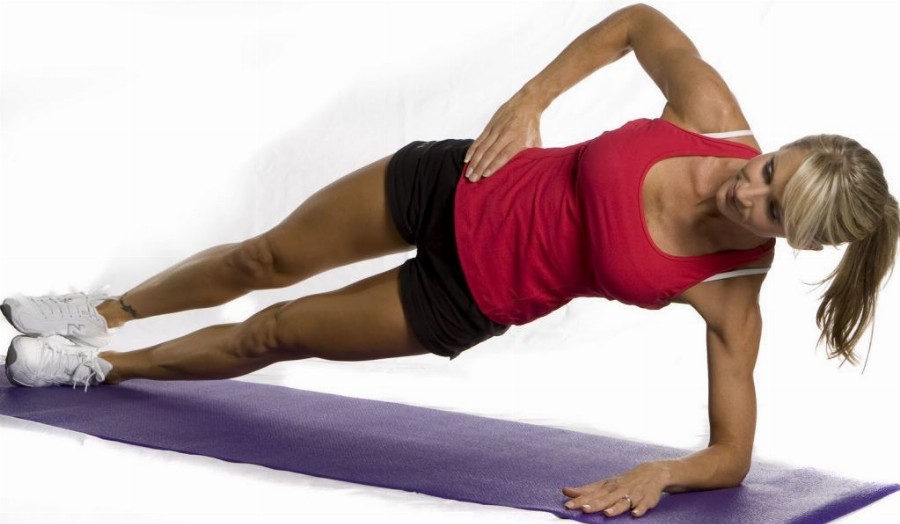
For the first time you can simultaneously at least 15-20 seconds, but, if desired, try to increase the time with each workout.
Video: Examples of the side plank
Side twists, subject to a small amount of subcutaneous fat, very effectively help to achieve beautiful curved lines on the sides of the press.
- The initial position is put on the rug, bend the legs in the knees, the hands are assigned to the head.
- We take the knees to the right so that the right knee fell to the floor. The right hand can be put on the left side to feel the cuts of the muscles in the process of twisting, or leave behind your head together with the left.
- On the exhalation, we strain the abdominal muscles and twist the housing, lifting the shoulders upstairs.
- Inhaling, return to its original position.
- We produce the required number of times to complete the approach.
- We change the position of the knees - now the left knee must lie on the surface, and the right - to be on top.
- We repeat the same thing with the same number of repetitions.
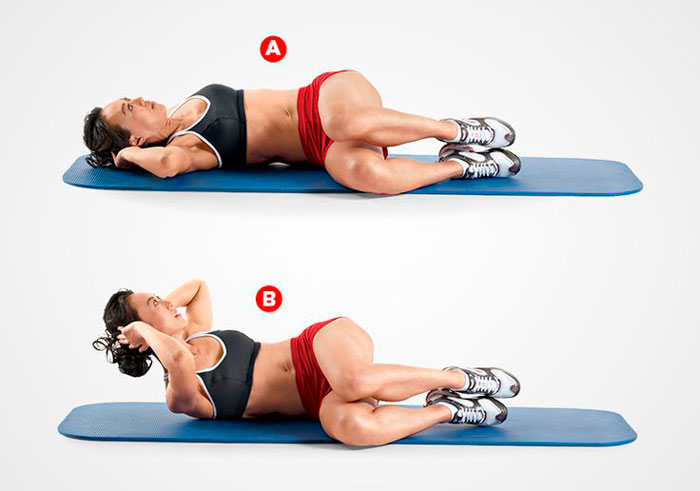
We make 10-15 repetitions for each side on 3 approaches.
Video: Side Curses Exercise Technique for Press Workout
Turns of the hull sitting or standing with a barbell or gymnastic stick
It is worth noting that when using a small weight in this exercise, the muscles are not fully incorporated into the work, and the execution of turns with a lot of weight can be attendant. Therefore, we recommend turning the housing as a warm-up exercise and with a slight weight. The principal difference in that, sitting or standing, we carry out the turns of the housing, no.
- The starting position is the back straight, we take extra weight (rod or gymnastic stick), we bring it behind the back for the fixation of the back, take it on the edges, the look is ahead.
- We carry out the turns of the housing with the maximum amplitude. Do not turn your head together with the torso - it can lead to dizziness. I do not stop keeping back straight.
- After the required number of repetitions stop, we return to the starting position, we put weight into place.
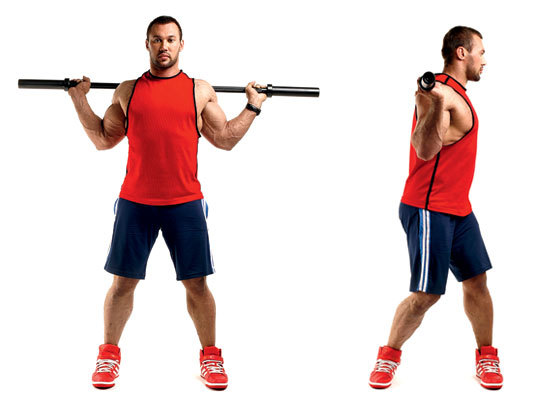
Turns It is advisable to perform intensely for 2-3 minutes (approximately 100 turns per side). During a twist, we take out, when you return to the center - inhale.
Video: An overview of the rotation of the housing with a gymnastic stick
Recommendations for the performance of exercises on the oblique muscles
- Do not build your training with the settlement of the development of exclusively abdominal muscles, as they are involved in many moves and exercises.
- When you turn on the proposed exercises to your training complex, it is advisable to perform 3-4 exercises, after which - in the next training session - to replace them with others. This will allow the muscles to always be in a tone and will not let them get used to monotonous loads.
- Do not train oblique muscles daily, since they need time to recover. It is advisable to give them this opportunity once every two or three days.
- It is very important before the workout to carry out a small warm-up for heating muscles. After training, it is necessary to make a stretching, which will ensure the proper formation of silhouette and will free you from pain after physical exertion.
- For an hour and a half before training, it is recommended to refrain from feeding food, as well as an hour after it.
Exercises on the abdominal muscles play an important role in the formation of a beautiful press and strengthening overall human health, since these muscles are a significant part of the muscular corset and affect the health of the spine and the normal functioning of the internal organs.
